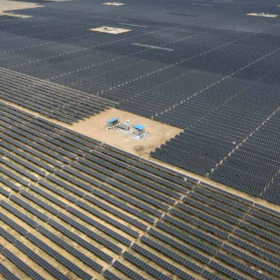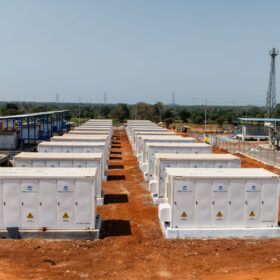pv magazine: While rooftop solar has recorded impressive growth in India, the “40 GW by 2022” target seems beyond reach. What are the areas to improve upon?
In order to achieve the 40 GW target, the rooftop segment has to double every year in terms of installations. However, there are a few pressing issues throttling growth.
For a large majority of customers, high upfront cost of solar is the primary deterrent. While there are plenty of financial instruments to support the development of utility-scale solar plants, no such instruments are available for rooftop solar customers. Most homeowners and MSMEs [micro, small and medium enterprises] have to rely on their own funds to set up a solar system.
Providing financing solutions to residential and MSME customers where monthly outflow is similar to or lower than energy savings can have an exponential growth impact.
Constantly evolving State and Central policies related to taxes, net metering, subsidies, etc create uncertainty for both customers and financial institutions. This delays the decision-making process and results in a long and expensive sales cycle.
Lack of readily available information about solar and how to assess various solar options is preventing solar adoption. 70% of prospective customers have delayed or decided not to go for a solar system due to this.
pv magazine: Which states do you find more attractive or unattractive for solar investment?
As stated earlier, one major hindrance to investing in rooftop solar is the upfront cost. However, consumers in states with higher per capita income and high grid tariffs are able to self-fund their rooftop solar purchase. Consumers in states with low capita income and low grid tariff, below Rs 5/KWh, rely heavily on subsidies.
High power tariffs (>Rs 5.5/KWh) make solar a viable option even without subsidy since solar power is cheaper than the grid. In India, grid power tariff varies widely from state to state. For example, in Maharashtra the power tariff can go up to Rs 11 per unit while in Sikkim, the highest tariff is around Rs 5 for a LT (Low Tension – domestic customer) connection. This results in varied adoption of solar across states.
In a few states, DISCOMs are removing net metering as an option for certain customer segments. This requires a change in business model that does not rely on grid export. Here, energy storage or community solar comes into the picture.
Net metering approval process is yet another challenge in many states. For example, in Maharashtra and Gujarat developers face lengthy approval processes which can last anywhere between three to six months. In contrast, the approval process in Delhi and Telangana is more streamlined and comparatively takes only 25 to 30 days. These inconsistencies present a significant challenge for rooftop installers and customers.
The process for implementing net metering policies and incentives needs to be made efficient and consistent to motivate consumers to adopt rooftop solar systems.
pv magazine: How big is the market for rooftop solar plus storage in India?
Currently, the rooftop solar plus energy storage market is at a nascent stage. This is mainly because a major part of the country now experiences little or no power cuts. Hence the dependency on storage is low. Energy storage typically doubles the cost of rooftop solar systems. This makes the option economically less attractive in the present electricity scenario.
However, with large solar capacity getting added annually, there is a mismatch between supply or energy generation and demand. Solar power is produced from 8 am to 5 pm, whereas energy consumption is throughout the day and might peak at night in several cases.
Energy storage at a utility scale as well as an individual scale can play a very important role in balancing this supply-demand gap. Overall market size for this product will depend on how utilities decide to move ahead with balancing supply and demand with energy storage and incentivising use of energy storage devices.
We are in a position to address the existing energy storage demand, because it’s low. Going forward, transitioning to lithium based or other more advanced forms of energy storage with local manufacturing will play a major role in meeting future demand.
pv magazine: So far, commercial and industrial rooftop solar has taken the lead over residential rooftop solar. How attractive is the option of group captive projects in this space?
Group captive is an arrangement in which a developer sets up a power project for the collective use of multiple consumers who have 26% equity in the project and must consume 51% of the power produced.
Challenges with land acquisition, uncertainty around wheeling, transmission and distribution charges, etc have made the group captive an un-attractive option. In several states, utilities do not allow projects under open-access, which is a more commonly used terminology for these types of projects. Therefore it is no surprise that the open access market accounts for less than 10% of the total solar capacity.
pv magazine: How can India make the most of residential and MSME opportunity?
Large entities with robust credit profiles have accounted for most of the rooftop solar capacity addition. This is also because rooftop solar companies are able to offer various financial instruments that reduce upfront ownership costs for these customers. The long-term market opportunity lies in making it easier for residential and micro and small enterprises to own a rooftop solar system.
Developing lending partnerships that allow these customers to pay for their solar systems over 3 to 7 years will play a major role in driving growth.
pv magazine: Finally, what are the major trends that are shaping the rooftop solar market worldwide?
Community solar is an emerging opportunity where communities use rooftop solar and energy storage to independently manage their energy supply and demand. It has the potential to democratize access to renewables for large sections of the population. This is a complex undertaking that requires utilities to also participate in the process. Utilities have to be sophisticated enough to incorporate this into their demand and supply calculations.
In developed countries, access to precise solar radiation data at an individual roof-level along with information about customer’s energy consumption patterns and credit score is fundamentally re-shaping the way rooftop solar is sold. Overlaying these three pieces of information means that rooftop solar companies can reach out to the customer with a pre-designed system and financial options that work in their particular case. This will speed up adoption of solar significantly.
This content is protected by copyright and may not be reused. If you want to cooperate with us and would like to reuse some of our content, please contact: editors@pv-magazine.com.









All schools, colleges and Universities should be fully provided with solar and if possible wind energy installations. The Government also gives subsidies. The students can be easily motivated and trained to have solar over their residences wherever possible. Suitable recognition can be given to such parents who are motivated to go for solar.
The institutions who have taken keen interest in promoting solar should be suitably rewarded.
Perhaps this can be thought over.
Agree with interviewee comments on lack of data with potential consumers becoming a limiting factor on adoption of rooftop solar, and, lack of clear & long term policy which prevents solar businesses from adopting long term strategy and marketing plans, and leading to lower productivity installations. . However, disagree on issue of delays in approvals in MH & GJ (maybe Fryer’s independent/personal experiences), but rooftop solar projects in MH are usually cleared within 2-3 weeks, though may take upto 4 weeks in GJ (excl for larger projects +500 KWp), definitely not 3-6 months..